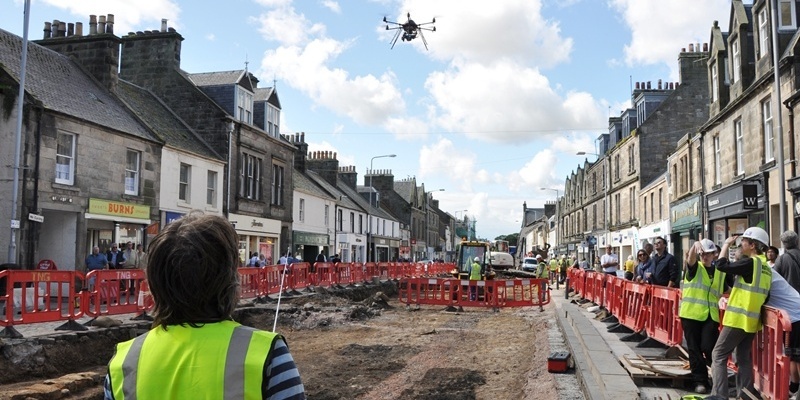St Andrews is home to the remains of Scotland’s first council building, new high-tech research has revealed.
Parts of the old tollbooth on Market Street are thought to have been built in or around 1140, according to a new archaeological MikroKopter technique where a GPS device photographs the site from the air and forms a composite map of the area.
The tollbooth, or praetorium, was the office from which the provost and baillies organised the running of the burgh over the centuries. It is well documented that this type of building was used throughout Scotland from the 16th century but the archaeological deposits found in St Andrews suggest the building dates back to the first half of the 12th century a theory supported by medieval charter evidence. It would make them the earliest upstanding remains of a council building in Scotland.
The tollbooth is known to have been rebuilt in the 16th century after a royal proclamation ruled town houses must also include jails, and this building stood in the centre of Market Street until it was demolished in the 1860s.
Detailed interpretation of the site has been made possible thanks to the services of local company Edward Martin Photography.
Fife Council archaeologist Douglas Speirs said, “The opportunities offered by MikroKopter technology represent a truly radical leap forward in archaeological surveying. Not only does it reveal detail near impossible to identify on the ground, but the nature and speed of the operation makes it ideal for work on development sites where access is difficult and time constraints are paramount.
“This technique will undoubtedly revolutionise the practice of commercial archaeology and I expect that surveying drones hovering over urban building sites will become a common sight in the years to come.”
Using the aerial surveying technique has enabled the archaeology on the site to be identified, recorded and excavated significantly faster than traditional archaeological methods, meaning no hold-up to the development timetable. Excavations are continuing on site and it is hoped radiocarbon dates may add even greater interest to the findings.
Mr Speirs added, “It’s hard to be sure before we get the carbon dates back, but it’s entirely possible that the deposits underlying the tollbooth may yet prove to be some of the earliest evidence of a town in Scotland.”
Archaeological monitoring will continue for the duration of the regeneration project.
Market Street is one of St Andrews’ busiest shopping streets and contained historic sites including the Tron, the Old Townhouse footprint and Mercat Cross. It is the focus of a £1.5 million project to rejuvenate the area and reduce congestion.
The project is expected to be complete by November.
Although an important monastic site and a centre of pilgrimage since at least the ninth century, the actual town or burgh of St Andrews is believed to have been created some time in the early 12th century.
Most of Scotland’s oldest towns, or burghs, such as Berwick, Roxburgh, Stirling and Perth came into existence around this time and went on to govern their own affairs from a central office known at the time as a praetorium, domus consili (council house) or tollbooth.
